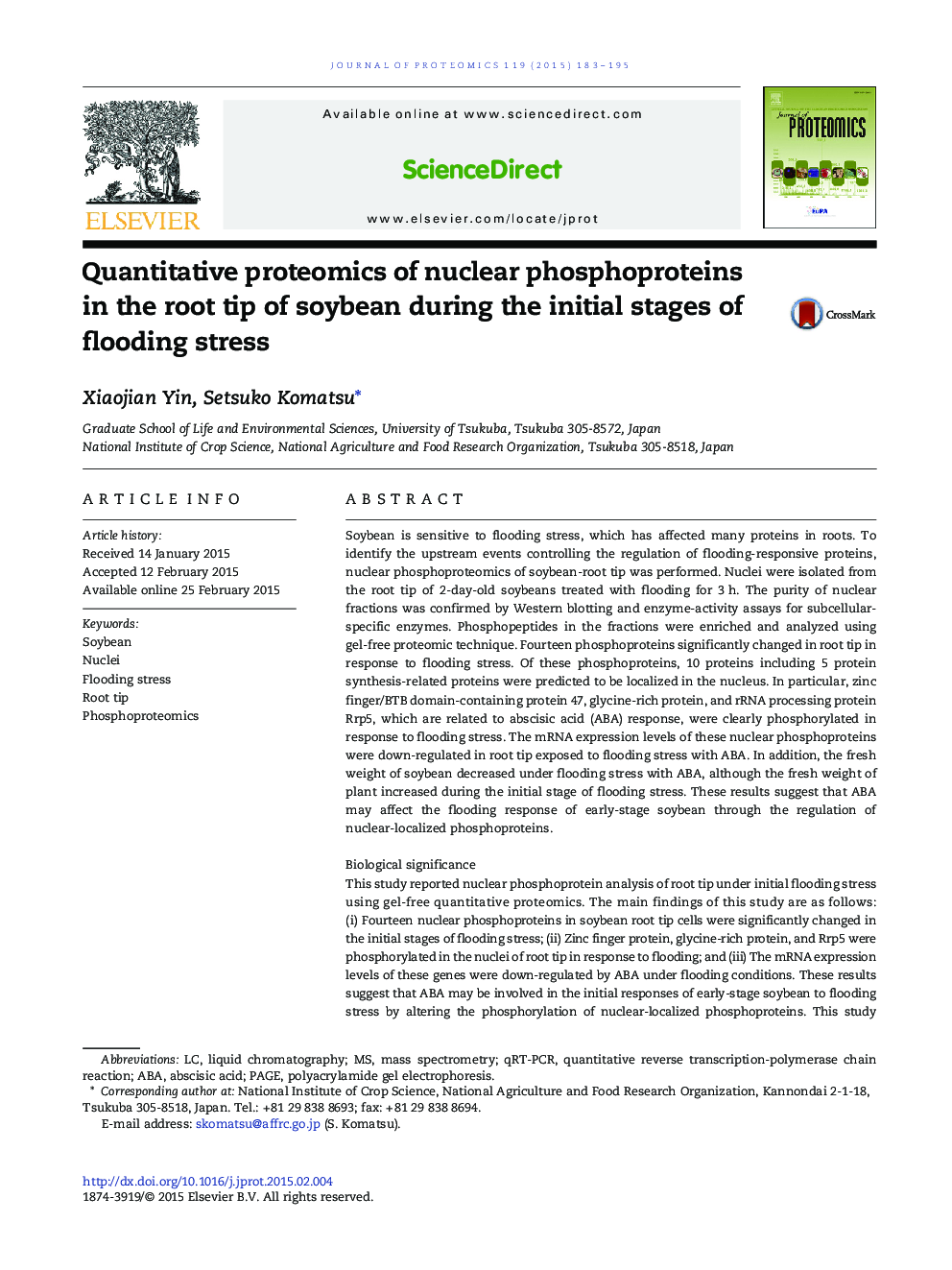| Article ID | Journal | Published Year | Pages | File Type |
|---|---|---|---|---|
| 1225376 | Journal of Proteomics | 2015 | 13 Pages |
•Nuclear phosphoproteomics is performed in soybean-root tip under flooding stress.•Fourteen nuclear phosphoproteins change in root tip in response to flooding stress.•Zinc finger protein, glycine rich protein, and Rrp5 are phosphorylated by flooding.•mRNA expression levels of these genes are down-regulated by ABA under flooding.•ABA may affect flooding response by regulating phosphorylation in soybean nuclei.
Soybean is sensitive to flooding stress, which has affected many proteins in roots. To identify the upstream events controlling the regulation of flooding-responsive proteins, nuclear phosphoproteomics of soybean-root tip was performed. Nuclei were isolated from the root tip of 2-day-old soybeans treated with flooding for 3 h. The purity of nuclear fractions was confirmed by Western blotting and enzyme-activity assays for subcellular-specific enzymes. Phosphopeptides in the fractions were enriched and analyzed using gel-free proteomic technique. Fourteen phosphoproteins significantly changed in root tip in response to flooding stress. Of these phosphoproteins, 10 proteins including 5 protein synthesis-related proteins were predicted to be localized in the nucleus. In particular, zinc finger/BTB domain-containing protein 47, glycine-rich protein, and rRNA processing protein Rrp5, which are related to abscisic acid (ABA) response, were clearly phosphorylated in response to flooding stress. The mRNA expression levels of these nuclear phosphoproteins were down-regulated in root tip exposed to flooding stress with ABA. In addition, the fresh weight of soybean decreased under flooding stress with ABA, although the fresh weight of plant increased during the initial stage of flooding stress. These results suggest that ABA may affect the flooding response of early-stage soybean through the regulation of nuclear-localized phosphoproteins.Biological significanceThis study reported nuclear phosphoprotein analysis of root tip under initial flooding stress using gel-free quantitative proteomics. The main findings of this study are as follows: (i) Fourteen nuclear phosphoproteins in soybean root tip cells were significantly changed in the initial stages of flooding stress; (ii) Zinc finger protein, glycine-rich protein, and Rrp5 were phosphorylated in the nuclei of root tip in response to flooding; and (iii) The mRNA expression levels of these genes were down-regulated by ABA under flooding conditions. These results suggest that ABA may be involved in the initial responses of early-stage soybean to flooding stress by altering the phosphorylation of nuclear-localized phosphoproteins. This study provides not only the nuclear phosphoproteomic analysis but also the molecular mechanism underlying the initial flooding responsive nuclear phosphoproteins functions in the root tip of soybean.
Graphical abstractFigure optionsDownload full-size imageDownload high-quality image (177 K)Download as PowerPoint slide
